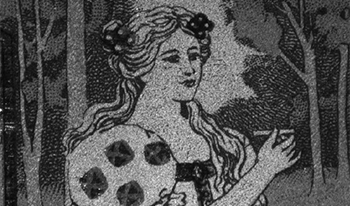
Reflectance transformation imaging (RTI) is a widespread technique for studying and documenting cultural heritage artifacts encompassing textural information. The principle is capturing an object from a static camera position by changing the direction of the incident light in each image. The coupling of this approach with multispectral imaging (Multispectral RTI) has shown promising results in the recent years. Considering this approach, we propose an expanded framework for the investigation and documentation of the visual appearance of surfaces, targeted to cultural heritage artifacts. In this work, we study the integrated representation of the angular and spectral components of reflectance, as well as the contributions of exploration by independent wavelengths

The negative-positive chromogenic process, despite being an important milestone in the evolution of color motion picture film technology, exhibits significant fading of its image dyes, leading to the loss of chromatic integrity. A complete spectral approach for the digital restoration of chromogenic film is proposed. A material-based image processing method allows to extract the residual color information associated with the analytical densities, selectively enhance the faded dyes, and finally recreate the original aesthetics by associating the spectral properties of the film stock.